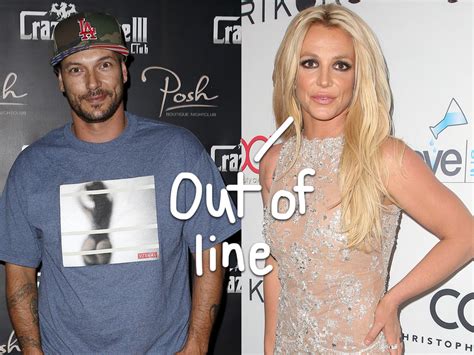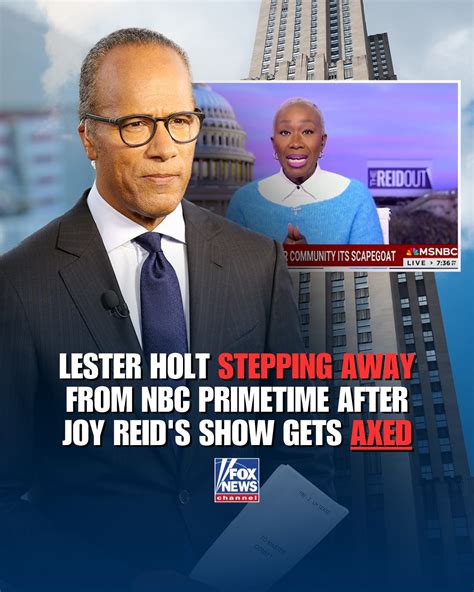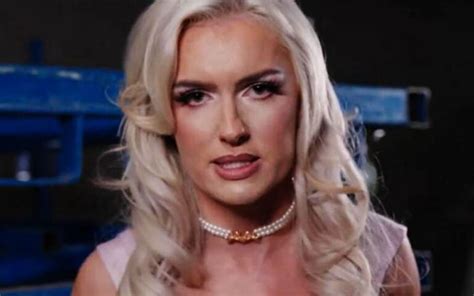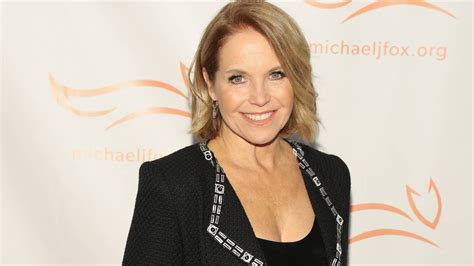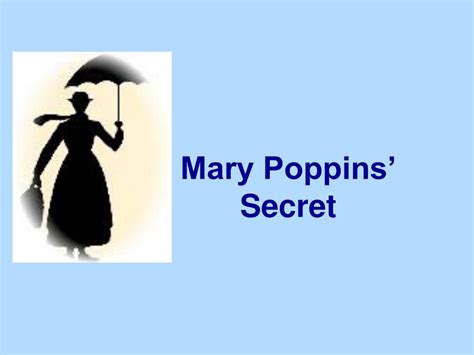
From Julie Andrews almost losing the role to Dick Van Dyke’s disastrous Cockney accent, “Mary Poppins” holds decades’ worth of secrets. A new look behind the scenes reveals the trials, tribulations, and triumphs that brought the practically perfect nanny to the silver screen.
Walt Disney’s 1964 cinematic triumph, “Mary Poppins,” remains a beloved classic, enchanting generations with its magical narrative and memorable musical numbers. However, behind the whimsical facade lies a story of creative struggles, casting uncertainties, and technological innovations that shaped the film into the masterpiece it is today. From the arduous process of securing the rights from author P.L. Travers to the on-set challenges of bringing animated sequences to life, the making of “Mary Poppins” is a fascinating tale in itself.
The Quest for the Rights:
The journey to bring “Mary Poppins” to the big screen began with Walt Disney’s unwavering determination to acquire the rights from author P.L. Travers. Disney’s daughters were captivated by the book series, sparking his initial interest. However, Travers was notoriously protective of her creation and harbored deep reservations about Disney’s vision for the character. It took Disney nearly 20 years of persistent courtship to finally convince Travers to grant him the film rights.
“I had no idea what I was getting into,” Disney later admitted, reflecting on the protracted negotiation process. Travers imposed strict conditions on the adaptation, demanding script approval and creative control. These demands would later lead to significant clashes during production, as Disney’s more commercial sensibilities often clashed with Travers’s desire to maintain the integrity of her literary creation.
The strained relationship between Disney and Travers is well-documented, and was even the subject of the 2013 film “Saving Mr. Banks,” which explored the creative tensions that arose during the making of “Mary Poppins.” While the film took some creative liberties with the actual events, it highlighted the fundamental differences in artistic vision between Disney and Travers.
Casting Considerations and Julie Andrews’s Ascent:
The casting of Mary Poppins herself was a crucial decision that would ultimately define the film’s success. Walt Disney initially considered several established actresses for the role, but he ultimately chose Julie Andrews, who was relatively unknown in the film world at the time. Andrews had achieved considerable success on the Broadway stage, particularly with her role in “My Fair Lady,” but she was passed over for the film adaptation in favor of Audrey Hepburn.
Disappointed but undeterred, Andrews accepted Disney’s offer to play Mary Poppins, marking her film debut. Disney recognized Andrews’s unique combination of talent, charisma, and vocal ability, believing she possessed the perfect qualities to embody the iconic nanny. “Julie had that certain something,” Disney explained, “a quality that just made her right for the part.”
Andrews’s performance in “Mary Poppins” was universally acclaimed, earning her an Academy Award for Best Actress. The role catapulted her to international stardom, establishing her as one of the most beloved actresses of her generation. Her portrayal of Mary Poppins became synonymous with the character, forever cementing her place in cinematic history.
Dick Van Dyke’s Cockney Accent: A Lingering Controversy:
While “Mary Poppins” is celebrated for its many achievements, one aspect that has consistently drawn criticism is Dick Van Dyke’s portrayal of Bert, the chimney sweep. Van Dyke’s attempt at a Cockney accent has been widely panned as one of the worst accents in film history. Critics have described it as an inaccurate and exaggerated caricature of the working-class London dialect.
Van Dyke himself has acknowledged the shortcomings of his accent, expressing regret for not having worked harder to perfect it. “I was working with an Irish coach, and he didn’t do an accent any better than I did,” Van Dyke confessed in an interview. Despite the criticism, Van Dyke’s energetic performance and undeniable charm contributed to the film’s overall success. His comedic timing and physical dexterity brought a sense of fun and whimsy to the role of Bert, making him a memorable character despite the accent faux pas.
The controversy surrounding Van Dyke’s accent serves as a reminder of the importance of cultural sensitivity and authenticity in filmmaking. While comedic license is often granted, the portrayal of accents and dialects should be approached with care and respect to avoid perpetuating stereotypes or causing offense.
Innovative Special Effects and Animation:
“Mary Poppins” was groundbreaking for its innovative use of special effects and animation, seamlessly blending live-action footage with animated sequences. The film’s visual effects team employed a variety of techniques, including matte paintings, rotoscoping, and sodium vapor process, to create the film’s magical world.
The “Jolly Holiday” sequence, featuring Mary Poppins and Bert dancing with animated penguins, is a prime example of the film’s technical achievements. The animators meticulously rotoscoped the live-action footage of Andrews and Van Dyke, tracing their movements frame by frame to create the animated characters that interact with them. This painstaking process required immense skill and patience, but the result was a visually stunning and unforgettable scene.
The film’s special effects were so impressive that they earned “Mary Poppins” an Academy Award for Best Visual Effects. The film’s success paved the way for future advancements in special effects technology, influencing generations of filmmakers and inspiring new techniques for bringing fantastical worlds to life on the screen.
Musical Masterpieces and Enduring Legacy:
The Sherman Brothers, Richard and Robert, composed the film’s memorable songs, which have become classics in their own right. From the exuberant “Supercalifragilisticexpialidocious” to the tender “Feed the Birds,” the Sherman Brothers’ compositions are integral to the film’s enduring appeal. Their music captures the film’s themes of imagination, wonder, and the importance of family.
Walt Disney recognized the Sherman Brothers’ talent and gave them considerable creative freedom in developing the film’s score. The brothers worked closely with the film’s writers and directors to ensure that the songs seamlessly integrated into the narrative and enhanced the emotional impact of the story.
The Sherman Brothers won two Academy Awards for their work on “Mary Poppins,” including Best Original Song for “Chim Chim Cher-ee” and Best Original Score. Their contributions to the film’s success cannot be overstated, as their music continues to resonate with audiences of all ages.
“Mary Poppins” has had a lasting impact on popular culture, inspiring countless adaptations, parodies, and homages. The film’s themes and characters continue to be relevant today, reminding us of the importance of imagination, kindness, and the power of believing in the impossible. Its influence extends beyond the realm of entertainment, shaping our cultural understanding of childhood, family, and the magic that can be found in everyday life.
Other Fascinating Behind-the-Scenes Facts:
Beyond the well-known aspects of “Mary Poppins,” numerous other fascinating details contributed to the film’s creation.
-
P.L. Travers’s Disapproval: Despite Disney’s efforts, P.L. Travers was never fully satisfied with the film adaptation of her book. She felt that Disney had strayed too far from her original vision and that the film was too sentimental and simplistic. She famously cried at the film’s premiere, not out of joy, but out of disappointment.
-
The Chalk Drawing Scene: The chalk drawing scene, in which Mary Poppins, Bert, and the children jump into a chalk painting, was a technical marvel for its time. The scene required the actors to interact with a two-dimensional drawing, creating the illusion of a three-dimensional world.
-
“Supercalifragilisticexpialidocious”: The word “Supercalifragilisticexpialidocious” was invented by the Sherman Brothers as a nonsensical word to express something wonderful. The word has since entered the popular lexicon, becoming a symbol of the film’s playful and imaginative spirit.
-
The Penguin Dance: The penguin dance sequence was one of the most challenging and time-consuming aspects of the film’s production. The animators spent months perfecting the penguins’ movements, ensuring that they seamlessly interacted with the live-action footage of Andrews and Van Dyke.
-
Dick Van Dyke’s Second Role: In addition to playing Bert, Dick Van Dyke also played the role of Mr. Dawes Sr., the elderly bank director. He was heavily disguised with makeup and prosthetics, making him virtually unrecognizable.
-
David Tomlinson’s Dual Role: David Tomlinson, who portrayed Mr. Banks, also voiced several animated characters, including the parrot head umbrella.
-
“Feed the Birds”: Walt Disney considered “Feed the Birds” his favorite song from the film. He often requested the Sherman Brothers to play it for him in his office.
-
The Pearly Band: The Pearly Band, featured in the “Step in Time” sequence, was comprised of actual Pearly Kings and Queens from London.
-
“Let’s Go Fly a Kite”: The kite used in the final scene was designed to resemble Mary Poppins’ silhouette.
-
The Rooftop Sequence: The rooftop sequence, featuring Bert and the chimney sweeps dancing across the London skyline, was filmed on a meticulously constructed set that recreated the city’s rooftops.
-
The “Spoonful of Sugar” Effect: The “Spoonful of Sugar” scene, in which Mary Poppins magically cleans up the nursery, was achieved using stop-motion animation and clever editing.
-
Karen Dotrice and Matthew Garber: Karen Dotrice and Matthew Garber, who played Jane and Michael Banks, formed a close bond during filming. They went on to appear in other Disney films together.
-
Julie Andrews’s Preparation: Julie Andrews meticulously prepared for her role as Mary Poppins, studying the character’s mannerisms and accent. She also worked closely with a choreographer to develop the character’s distinctive movements.
-
The Film’s Length: “Mary Poppins” was one of the longest Disney films ever made, clocking in at over two hours.
-
The Budget: The film had a substantial budget for its time, reflecting Disney’s commitment to creating a high-quality and visually stunning production.
-
Box Office Success: “Mary Poppins” was a massive box office success, grossing over $100 million worldwide upon its initial release.
-
Critical Acclaim: In addition to its commercial success, “Mary Poppins” also received widespread critical acclaim, earning numerous awards and nominations.
-
Stage Adaptation: “Mary Poppins” has been adapted into a successful stage musical, which has been performed around the world.
-
Sequel: A sequel to “Mary Poppins,” titled “Mary Poppins Returns,” was released in 2018, starring Emily Blunt as Mary Poppins.
-
Walt Disney’s Involvement: Walt Disney was heavily involved in every aspect of the film’s production, from casting to special effects to music. He considered “Mary Poppins” one of his proudest achievements.
-
Enduring Popularity: “Mary Poppins” continues to be a beloved and enduring classic, captivating audiences of all ages with its magical story, memorable characters, and timeless themes.
These behind-the-scenes facts offer a glimpse into the intricate and fascinating process of bringing “Mary Poppins” to life. They reveal the dedication, creativity, and technical innovation that went into creating this cinematic masterpiece. The film’s enduring popularity is a testament to its timeless appeal and its ability to transport audiences to a world of wonder and imagination.
FAQ: Frequently Asked Questions about “Mary Poppins”
1. Why did it take Walt Disney so long to acquire the rights to “Mary Poppins” from P.L. Travers?
P.L. Travers was incredibly protective of her creation and had deep reservations about Disney’s vision for the character. She was concerned that Disney would sentimentalize and simplify her stories, and she imposed strict conditions on the adaptation, including script approval. It took Disney nearly 20 years of persistent courtship and negotiation to finally convince Travers to grant him the film rights. According to the original article, it stated that Travers was “notoriously protective of her creation and harbored deep reservations about Disney’s vision.” This protectiveness was a huge contributor to the amount of time it took to get the rights.
2. How did Julie Andrews get the role of Mary Poppins?
Julie Andrews was chosen for the role of Mary Poppins after Walt Disney saw her perform on Broadway. She had achieved considerable success on stage, but she was relatively unknown in the film world. Disney recognized her unique combination of talent, charisma, and vocal ability, believing she possessed the perfect qualities to embody the iconic nanny. He offered her the role after she was passed over for the film adaptation of “My Fair Lady,” a role she originated on Broadway. The article mentions “Julie had that certain something…a quality that just made her right for the part.”
3. Why is Dick Van Dyke’s Cockney accent in “Mary Poppins” so widely criticized?
Dick Van Dyke’s attempt at a Cockney accent has been widely panned as inaccurate and exaggerated. Critics have described it as an unrealistic and caricature of the working-class London dialect. Van Dyke himself has acknowledged the shortcomings of his accent, expressing regret for not having worked harder to perfect it. He even revealed that he was “working with an Irish coach, and he didn’t do an accent any better than I did” in a recent interview. The article highlights that it is “one aspect that has consistently drawn criticism is Dick Van Dyke’s portrayal of Bert, the chimney sweep.”
4. What were some of the innovative special effects used in “Mary Poppins”?
“Mary Poppins” was groundbreaking for its innovative use of special effects and animation. The film’s visual effects team employed a variety of techniques, including matte paintings, rotoscoping, and sodium vapor process, to create the film’s magical world. The “Jolly Holiday” sequence, featuring Mary Poppins and Bert dancing with animated penguins, is a prime example of the film’s technical achievements. The article confirms that the film won an “Academy Award for Best Visual Effects,” emphasizing its innovation.
5. What is “Supercalifragilisticexpialidocious,” and where did it come from?
“Supercalifragilisticexpialidocious” is a nonsensical word invented by the Sherman Brothers, Richard and Robert, as something wonderful. The word has since entered the popular lexicon, becoming a symbol of the film’s playful and imaginative spirit. The article explains the brothers created it to “express something wonderful,” which has led to its current definition.
6. What impact did “Mary Poppins” have on Walt Disney’s career and the future of Disney films?
“Mary Poppins” was one of Walt Disney’s proudest achievements and a major success for his studio. The film’s commercial and critical acclaim solidified Disney’s reputation as a master storyteller and innovator in filmmaking. It also paved the way for future Disney films that blended live-action and animation, as well as musicals with memorable songs and elaborate production values. The film demonstrated Disney’s ability to appeal to audiences of all ages, and its enduring popularity has cemented its place in cinematic history.
7. How did P.L. Travers react to the finished film “Mary Poppins”?
Despite Disney’s efforts to appease her, P.L. Travers was never fully satisfied with the film adaptation of her book. She felt that Disney had strayed too far from her original vision and that the film was too sentimental and simplistic. She famously cried at the film’s premiere, not out of joy, but out of disappointment.
8. What role did the Sherman Brothers play in the success of “Mary Poppins”?
The Sherman Brothers, Richard and Robert, composed the film’s memorable songs, which have become classics in their own right. From the exuberant “Supercalifragilisticexpialidocious” to the tender “Feed the Birds,” the Sherman Brothers’ compositions are integral to the film’s enduring appeal. Their music captures the film’s themes of imagination, wonder, and the importance of family. They won two Academy Awards for their work on the film, including Best Original Song for “Chim Chim Cher-ee” and Best Original Score.
9. What is the significance of the song “Feed the Birds” in the context of “Mary Poppins”?
“Feed the Birds” is a poignant and tender song that encourages viewers to show kindness and compassion to others, particularly those less fortunate. The song reinforces the importance of empathy and generosity. Walt Disney considered “Feed the Birds” his favorite song from the film. He often requested the Sherman Brothers to play it for him in his office, highlighting its emotional resonance.
10. How were the animated sequences in “Mary Poppins” created?
The animated sequences in “Mary Poppins” were created using a combination of techniques, including rotoscoping, cel animation, and special effects. Rotoscoping involved tracing live-action footage of the actors to create animated characters that seamlessly interacted with them. Cel animation involved drawing individual frames of animation on transparent celluloid sheets, which were then layered and photographed to create the illusion of movement.
11. What makes “Mary Poppins” a timeless classic?
“Mary Poppins” is considered a timeless classic due to its universal themes of family, imagination, and the importance of seeing the world with wonder. The film’s memorable songs, charming characters, and innovative special effects have captivated audiences for generations. The film’s message of kindness, compassion, and believing in the impossible continues to resonate with viewers of all ages.
12. Was Julie Andrews’s Academy Award for “Mary Poppins” her first Oscar?
Yes, Julie Andrews’s Academy Award for Best Actress for her role in “Mary Poppins” was her first Oscar. It was a significant achievement, particularly as it marked her film debut. It solidified her position as a major star in Hollywood.
13. How involved was Walt Disney in the making of “Mary Poppins”?
Walt Disney was heavily involved in every aspect of the film’s production, from casting to special effects to music. He personally oversaw the project and made key creative decisions. He considered “Mary Poppins” one of his proudest achievements. His personal touch and attention to detail are evident in the film’s quality and enduring appeal.
14. What is the “sodium vapor process” used in the film’s special effects?
The sodium vapor process is a special effects technique that involves filming live-action footage against a bright yellow background lit by sodium vapor lamps. This technique allows for precise mattes to be created, which can then be used to composite the live-action footage with other elements, such as animated backgrounds or special effects.
15. Who were Karen Dotrice and Matthew Garber, and what happened to them after “Mary Poppins”?
Karen Dotrice and Matthew Garber played Jane and Michael Banks, respectively. They formed a close bond during filming and went on to appear in other Disney films together. Sadly, Matthew Garber passed away at a young age. Karen Dotrice continued to act but later pursued other interests.
16. Did “Mary Poppins” influence future Disney films?
Yes, “Mary Poppins” had a significant influence on future Disney films. Its success demonstrated the potential of blending live-action and animation and musicals with memorable songs. It paved the way for other Disney classics such as “Bedknobs and Broomsticks” and “Pete’s Dragon.”
17. Where were the outdoor scenes for “Mary Poppins” filmed?
While some scenes were shot on location in London, many of the outdoor scenes for “Mary Poppins,” particularly those set in Cherry Tree Lane and the park, were filmed on the Disney Studios backlot in Burbank, California. The backlot was transformed into a meticulously detailed recreation of Edwardian London.
18. What is the significance of the chalk drawing sequence in “Mary Poppins”?
The chalk drawing sequence is significant because it represents the power of imagination and the ability to escape into a world of fantasy. It is also a technical marvel, showcasing the film’s innovative use of special effects to seamlessly blend live-action footage with an animated world.
19. What are some of the themes explored in “Mary Poppins”?
“Mary Poppins” explores themes such as the importance of family, the power of imagination, the value of kindness and compassion, the need to embrace wonder and joy in everyday life, and the potential for magic to be found in the ordinary.
20. Is there a stage musical adaptation of “Mary Poppins,” and how successful has it been?
Yes, there is a stage musical adaptation of “Mary Poppins,” which has been performed around the world. It has been highly successful, winning numerous awards and accolades. The musical features many of the same songs and characters as the film, as well as new musical numbers and storylines.
21. Was “Mary Poppins Returns” (2018) a successful sequel to the original film?
“Mary Poppins Returns,” released in 2018, was generally well-received by critics and audiences. While it did not achieve the same level of cultural impact as the original, it was praised for its performances, musical numbers, and visual effects. It was a box office success.






